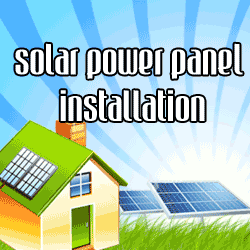

With all costs on the rise, adding up to the already huge problem with the New York housing crunch and worldwide economic woes; more and more people are searching of ways to cutback on costs. In our homes, one of the largest shares where our hard-earned budget goes to is the energy bill, thus making the efficient use of energy a great way to reduce monthly expenses. With that said, let us look into superb ideas to achieve energy efficient homes which are practical whether you are in Long Island, Brooklyn, Staten Island, Manhattan or Queens.
Energy Efficient Homes Idea #1:
Proper and Enough Insulation and Sealing
Other than maximized indoor comfort and increased home value, proper and enough insulation and sealing also makes your HVAC systems work less hard thus resulting to less operation costs and lower energy bills. Unknown to many homeowners, a well-insulated home extends beyond just the exterior walls and the attic. You should also ensure insulation in these areas: floors, ceilings especially those below unheated areas, basement walls, kneewalls, overhangs, and between interior walls.
Air leaks are silent predators that waste much energy even if you own a set of state-of-the-art energy efficient systems. Sealing should be approached in such as way that the whole house is benefited starting from the systems alone with its series of ducts and pipings to the walls, ceilings, floors, windows and doors, electrical outlets, and lighting and plumbing fixtures.
Energy Efficient Homes Idea #2:
Lighting
Saving energy with lighting can be done in many ways.
• Replace existing lighting fixtures with efficient models that give off as much brilliance but uses up less electricity like compact fluorescent bulbs, reflector lamps and tungsten halogen.
• Make use of lighting controls such as dimmers and other devices that reduce the time that lights are on unnecessarily.
• Make full use of natural lighting.
Energy Efficient Homes Idea #3:
Solar Panels
When thinking of energy-efficiency, nothing beats making full use of natural resources as not only are they powerful, they are free as well. One of the most popular innovations in natural resource-use is solar panels. Solar panels can come as solar thermal collectors with which the energy from the sun is used to heat water or liquid fuels, or solar photovoltaic modules that convert sunlight into electricity.
Energy Efficient Homes Idea #4:
Appliances
A good percentage of energy consumption in homes results from operating appliances. When shopping for appliances, it would be wise to pick those with the Energy Star label. Though the initial cost would be much higher, think about the long-term benefits. When computing the ‘real’ cost, you should also take operating costs and annual energy consumption into consideration. Looking into such factor proves that energy-efficient appliances are wise investments.
Energy Efficient Homes Idea #5:
Proper Maintenance of Appliances and Home Systems
Without regular cleaning and proper maintenance, appliances and HVAC systems would be working laboriously. This added strain would not only lead to damages but more consumption of energy as well. So, check your manuals for recommended ways of cleaning and proper equipment maintenance.
About the Author:
Eugene Makeev uses his skills and expertise to help home owners in Brooklyn, Long Island, Queens, Manhattan, and Staten Island avoid the common pitfalls by matching their needs with prescreened remodeling contractors New York.
Visit us for more on Remodeling Long Island.
Article Source: ArticlesBase.com - Ideas for Achieving Energy Efficient Homes




